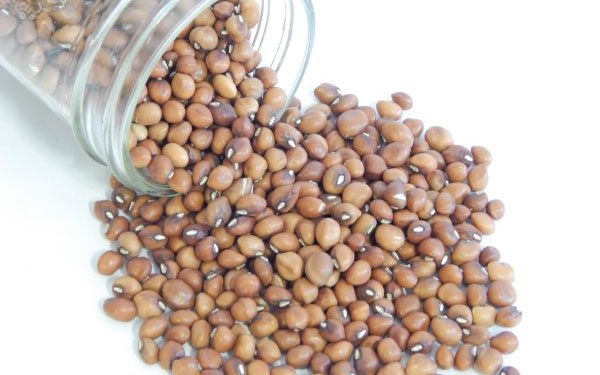Penultimate week, an NGO went to the press with the news that the yet-to-be released genetically modified Cowpea developed by the Institute for Agricultural Research, Ahmadu Bello University, Zaria, will cause cancer among Nigerians.

Their conspiracy theory was targeted at discrediting the 10-year research work undertaken by scientists in one of Nigeria’s top universities.
Although the faces behind the NGO claimed to be scientists, their claims showed they lacked basic knowledge of biology making their claims and position not only faulty but lacking scientific basis.
Using common sense, one is even surprised that the NGO is shouting at roof top when no one has been granted access to the beans to have cooked, eaten and found it to be cancerous.
Prof Ishiyaku Mohammed, a professor of plant breeding who led the research, pointed out clearly that the rules of substantial equivalence applied in the development of the Bt. Beans.
According to Mohammed, all the research efforts that went into the production of the Cowpea (Beans) was conducted by Nigerian scientists using tax payers’ money from the university; how then will they engineer a crop to kill Nigerians?
In food safety, the concept of substantial equivalence holds that the safety of a new food, particularly one that has been genetically modified, may be assessed by comparing it with a similar traditional food that has proven safe in normal use over time.
Substantial equivalence is a concept, first described in an Organisation for Economic Co-operation and Development (OECD) publication in 1993, which stresses that an assessment of a novel food, in particular one that is genetically modified, should demonstrate that the food is as safe as its traditional counterpart.
The concept of substantial equivalence was developed proactively before any new genetically modified (GM) foods came to the market. It was first described in an OECD publication in 1992, produced by about 60 experts from 19 OECD countries, who spent more than two years discussing how to assess the safety of GM foods. Most of these experts, all nominated by governments, were regulatory scientists from government agencies and ministries responsible for consumer safety.
In 1996, participants at an expert World Health Organisation/Food and Agriculture Organisation consultation recommended that “safety assessments based upon the concept of substantial equivalence be applied in establishing the safety of foods and food components derived from genetically modified organisms”. This represented an endorsement by experts based on three years’ experience in the safety assessment of various GM foods.
According to Nature, an international journal of science, substantial equivalence is not a substitute for a safety assessment. It is a guiding principle which is a useful tool for regulatory scientists engaged in safety assessments. It stresses that an assessment should show that a GM variety is as safe as its traditional counterparts. In this approach, differences may be identified for further scrutiny, which can involve nutritional, toxicological and immunological testing.
The approach allows regulators to focus on the differences in a new variety and therefore on safety concerns of critical importance. Biochemical and toxicological tests are certainly not precluded.
Since the concept of substantial equivalence was first described, several new foods have been assessed and knowledge has accumulated on how to use the concept. In parallel, the OECD, its governments and others have continued to review its adequacy in food safety assessment and to develop supporting tools.
The OECD’s task force on the safety of novel foods and feeds, in particular, continues to focus on the application of the concept. This includes work on assessment methodologies when substantial equivalence cannot be applied, as well as efforts to identify the critical nutrients and toxicants found in major crop plants, as a focus for the demonstration of substantial equivalence.
In the case of the Bt. Cowpea developed in Nigeria by the IAR, Dr Francis Onyekachi, a plant breeder with the African Agricultural Technology Foundation, put it mildly when he said that the only person that can differentiate the Bt. Cowpea from the ordinarily beans is the Maruca pest for which the beans was engineered to withstand.
“The modification carried out on the beans has nothing to do with its looks, taste, colour, size nor its nutritional composition. The Cowpea was only conferred with the resistance to the Maruca pest,” he added.
Dr Theodore Akpan, a food scientist, said that singling out the Bt. Cowpea as a cancer-causing agent is the highest level of ignorance, aimed at purely spreading falsehood.
“We have to understand that just because it was modified does not change it from what it was originally,” Dr Akpa said.
The development of the Bt. Cowpea (Beans), mainly to withstand the ravaging impact of Maruca, is a great feat on the part of Nigerian scientists and they should be celebrated rather than discrediting their 10-year effort to uplift Nigeria.
Chief Audu Ogbe, Minister of Agriculture and Rural Development, said recently that Nigeria has become the dumping sites for finished goods and products from all part of the globe. He challenged Nigerian scientists to step up their game and turn around the tides and make Nigeria a proud leader in the global innovations and inventions.
Chief Ogbe lamented the situation that has turned Nigeria into a net importer of everything including toothpicks and said that with support and encouragement, Nigerian scientists can excel.
We should support our own and encourage them to do more rather than collect peanuts from foreign interest and run-down genuine efforts capable of transforming our landscape for better.
By Hannah Nnadi
